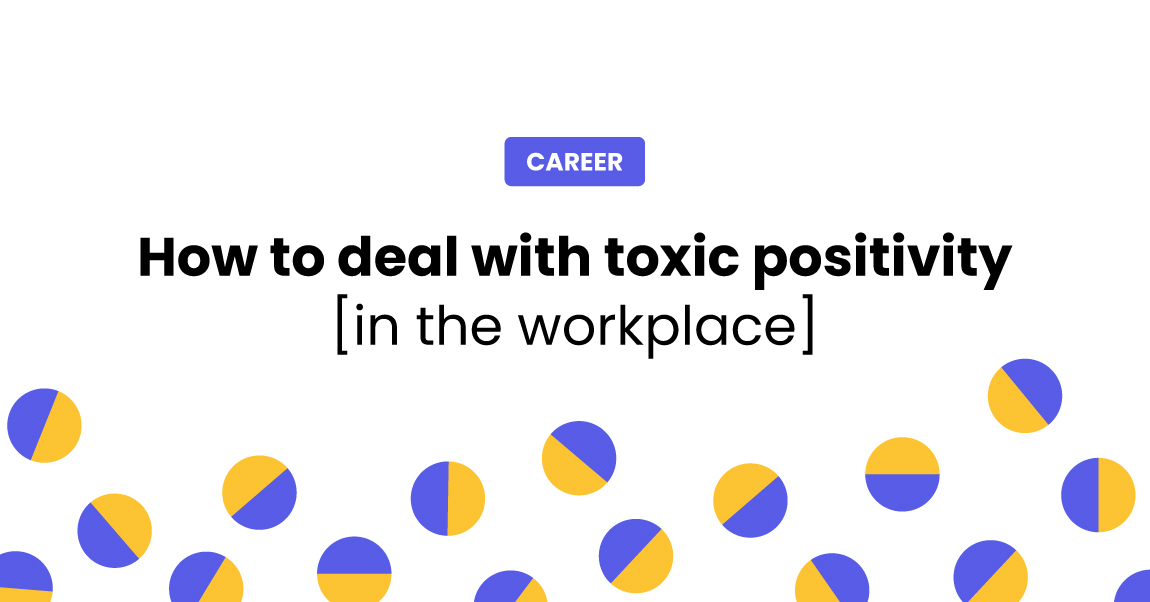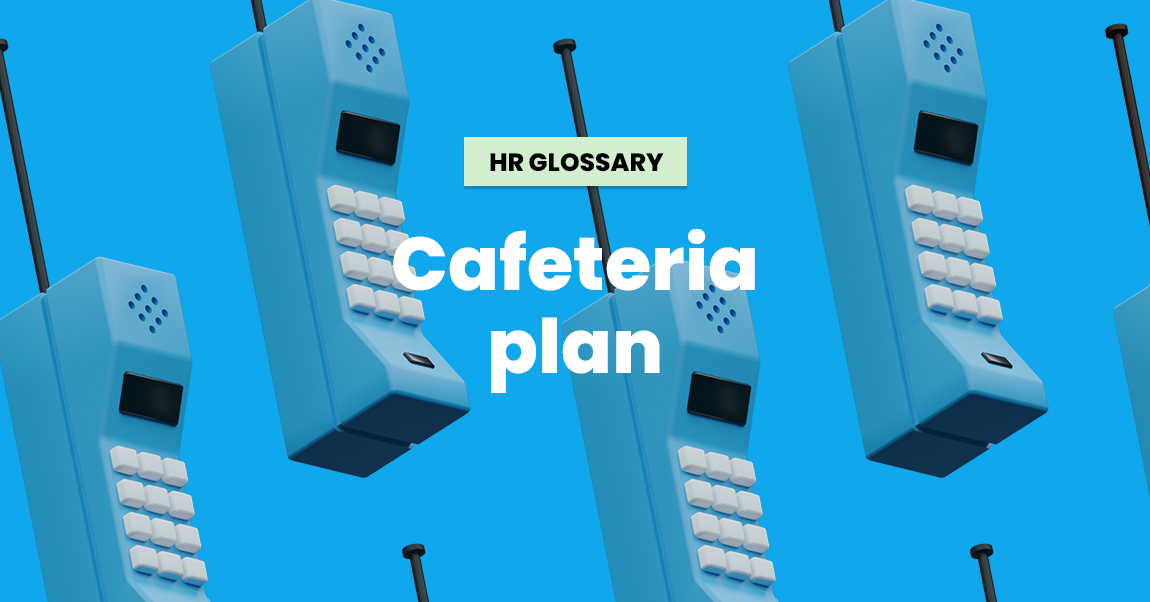Here’s the naked truth – if good vibes only is the company’s motto, you’re stepping into dangerous territory. And it’s because being urged to perpetuate a chin-up-can-do-anything attitude often does more harm than good. In fact, it can be a sign of toxic positivity in the workplace.
And while phrases like this usually come from a heartfelt place and are meant to motivate, encourage, or comfort an employee or teammate, they can as easily become overwhelming.
So, what can we do about it? Here’s a brief guide on how to deal with toxic positivity at work & find a better alternative.
What is toxic positivity, and why is it bad for the workplace?
The most straightforward (+ accurate) way to define toxic positivity in the workplace is as a premise that an individual should be happy, regardless of their reality and current situation. And since it’s in our nature to do our best to avoid experiencing negative emotions or getting caught up in unfavorable situations, it’s not that uncommon to get entangled in toxic positivity.
Now, some company cultures (that go for “positive vibes only”) lead to guilt, distrust, and even impostor syndrome. And those environments have people worrying over sharing notions, suggestions, or criticism. Eventually, the employees who stick around solely focus on the task at hand without a shred of a sense of value or actual motivation. And that makes boosting employee engagement and getting desired results unattainable.
Toxic positivity & mental health
All emotions are a fundamental part of human nature and each experience. However, some people and workplace cultures camouflage and/or brush them off. In those scenarios, we swap negative feelings for a fake smile. So, knowing how toxic positivity affects mental health and why we must avoid it is critical.
Here are a few key points to memorize and some of the most damaging effects of being happy at all costs:
- Shame and feeling of inadequacy: If our environment perpetuates the “stay positive no matter what” attitude toward work and life, we can easily start to think that we’re inept or ungrateful.
- Isolation and shaky relationships: If we embrace being cheerful regardless of our reality, we’ll live an inauthentic life. First, we will likely hold on to all sorts of inhibitions toward sharing our own pain. And also, those who are genuine would rather not talk to us than spill their guts and get an “it could be worse” type of comeback.
- Bottled emotions: If keeping a stiff upper lip becomes our way of handling difficulties, we’ll get the exact opposite results than we’ve hoped for. According to psychological studies, those who suppress their sentiments actually live them more intensely – they just don’t show it.
So, toxic positivity in the workplace (and in general) is bound to take its toll on our mental health and relationships. Although most of the advice and efforts tied to this way of coping come from a good place, its outcomes are rarely advantageous.
What are examples of toxic positivity?
Putting on a brave face is sometimes a necessity. Other times, it’s just toxic. If this is someone’s way of dealing with things, it’s certainly an unhealthy coping mechanism. Another example that could feel genuinely positive (when, in reality, it’s pretty harmful) is looking for a silver lining without exception. Some situations are dark and tragic. And no, maybe they didn’t actually happen for a reason. Finally, if you tend to ignore your own or other people’s feelings, that’s also the route toward gloom masked as forward-looking. Bottling emotions up is rarely/never the answer.
Now, when it comes to workplace culture and toxic positivity, there are quite a few examples to learn about. And an illustration number one is management’s disregard for the team’s or business’s reality. This particular situation is defined as cherry-picking. In other words, managers focus on the most favorable results or events, overlooking everything (and everyone) else.
Avoiding problems of this sort by being objective is a trait successful team leaders and managers have. They don’t ignore the issues. On the contrary! They bring them up, deal with them, and learn from them.
How do you deal with toxic positivity in the workplace? [3 key tips]
The first step we all must take is spotting the main indications of toxic positivity in the workplace. These are overrating positivity, concerns that often don’t get addressed, and a massive amount of pressure to be joyful. Then, we must make time for open discussions to cancel these falsely-positive attitudes and approaches. Being honest and professionally straightforward is another move to make to keep our environment healthy. And finally, it’s vital that we take some time away from work – especially when our mental health needs it.
Spot the red flags
Quantifying emotions (and employee experience) by using a simple “you should try harder” approach is both inaccurate and harmful. Some people manage to spot the warning signs quite early. These are the most common “symptoms” of a toxic-fueled environment:
- Positivity > logic,
- Ignoring issues > resolving them,
- Avoiding criticism > giving constructive feedback,
Pressuring workers to be happy never works. At least – in the long run. Some catchphrases and supercharged motivational quotes come in handy at certain times. But the whole company culture can’t rest upon “chin up” wording with little to no actual substance. The ways to get improved employee experience (+ engagement) and to show genuine interest in each employee’s wellbeing are a bit more demanding. Studies show that nearly 76% have experienced burnout at some point. So, dodging the gloomy stats by conveying a pushy, get-up-and-go kind of narrative is plain wrong.
Advocate for honesty
Fostering a work environment that inspires people and supports honesty (as the absolute best policy) is vital. It’s because the lack of it brings all sorts of adverse effects:
- Employees don’t trust each other and their team leaders, managers, and bosses.
- It’s nearly impossible to boost workers’ morale when having a hidden agenda or keeping some essential information concealed.
- The absence of fairness and frankness will inevitably take its toll on retention rates.
So, to avoid doubts and distrust, it’s crucial to open the floor up for discussion. Using regular meetings to do so is always a good idea. While at it, people should feel encouraged to share thoughts, ideas, knowledge, and feedback. This practice should be used to bring different teams and colleagues together.
And ultimately, leaving some extra time to pinpoint, discuss, and work out issues is pivotal. So, instead of sweeping problems under the rug, it’s best to crush all signs of toxic positivity by promoting truthfulness.
Set boundaries
Even if your workplace culture is perfectly healthy and encouraging, learning how to set certain boundaries is vital. By grasping how personal and professional boundaries help you (and why they matter as much as they do), you’ll open some new doors and keep your aims high on the list of priorities. First of all, you will value your own time more – and manage it more effectively! Also, you will build better relationships with both team members and bosses. Finally, you’ll have a clearer understanding of how to deal with toxic positivity in the workplace if it comes to it.
Here’s what these boundaries might look like: A colleague feels demoralized and blue. You’re more than willing to jump in and lend them a helping hand. Still, if you get the overwhelming urge to tell them to “cheer up,” maybe it would be best to bite your tongue and let them be the one that speaks. Listening is often a more efficient remedy.
However, there are times (and people who always prefer) to be strictly professional. So, if the colleague in question crosses your very own line and gets too private for your comfort, be precise regarding your attitude toward oversharing. Politely declining to take part in an intimate discussion is way better than saying, “cheer up,” and you better believe it!
✈️ Bonus tip: Take time off.
Taking some time off from work is much needed for your mental health (and more). But the truth is, we’re all guilty of being afraid to take some time away. For example, many avoid going on a vacation because they’re nervous about their performance. In that case, it’s worth thinking things through. Are they preventing themselves from getting the (absolutely needed) time off that could actually help them perform better than before? Toxic positivity at work sometimes looks like prioritizing being at work. Still, the reality is different: your job is not the only part of your life. And we all should aim for a deliberate work-life balance for our lives and careers to thrive.
Toxic positivity works in bizarre ways: And we all support it! [unconsciously]
Now, it’s time for some more ugly truths. We often support toxic positivity without even realizing it. But how come? Well, workplaces used to look a lot different. In the years and decades that have passed, employees were often perceived as worker bees. Or, in more simple terms, they were there to complete each task – regardless of the circumstances. The negative feelings every human experiences felt neglected. And the reality is that we’re all upset at work sometimes, or we’re obligated to talk and cooperate with a colleague who’s going through stuff. So, the phrases we sometimes use and the unconscious evasion we tend to hide behind are somewhat inherited.
Also, many of us subconsciously fear that we can soak others’ negative emotions. And so, we often choose to overlook our very own (and other people’s) blues.
Still, these examples are very far from being purposefully harmful. And so it’s not hard to identify the warning signs and overcome the issues.
Know how to deal with toxic positivity.
Now that we know the precise toxic positivity definition, signs, and ways of dealing with it, it’s time to take a peek at some bonus tips. Remember those phrases we should just ban from our workplaces and daily lives? Well, there’s a healthy alternative to them. So, instead of saying, “cheer up” or “at least it didn’t come to this-that,” try saying:
- Thank you for telling me,
- It seems like you’re going through a lot,
- Let me know if there’s anything I can do to support you.
Changing the entire environment may be a bit more of a challenge. But at least we can stop ourselves from falling into the trap of being positive despite everything and fake happiness.




